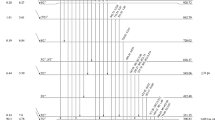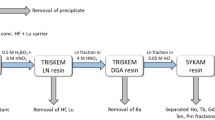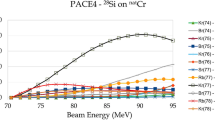Abstract
A RECENT discussion in the columns of NATURE has raised the question of the existence of elements chemically and spectroscopically identical but differing from one another by a few units of atomic weight. Should the far-reaching generalisations of Soddy and of Fajans prove correct, the chemical elements will have to be regarded from an entirely different point of view, and the explanation of the periodic nature of their properties will have to be sought for in the recurrent character of the processes of radio-active disintegration. At present, however, some of the evidence on which those views are based is at least open to question. With the exception of radium, niton, and the parent elements—uranium and thorium—none of the thirty-four radio-active bodies have been isolated, and none of their compounds have been obtained in a state approaching purity. Their properties have only been inferred from their behaviour when mixed with very large amounts, comparatively speaking, of known elements, such as lead, thorium, and tellurium, and when it has been found impossible to alter the proportions of these minute traces of radio-active matter by the usual analytical processes, chemical identity has been inferred. Even admitting the extreme delicacy of radio-active methods of analysis, it might be questioned whether much can be deduced from the inseparability of such minute traces when present along with large amounts of closely related elements. More satisfactory evidence would be furnished if the chemical properties of an equilibrium mixture from a pure radio-active parent could be investigated; and since during the last few months some direct observations have been made on the nature of radium-D and its products it may be of interest to give a preliminary account of the investigation.
This is a preview of subscription content, access via your institution
Access options
Subscribe to this journal
Receive 51 print issues and online access
$199.00 per year
only $3.90 per issue
Buy this article
- Purchase on Springer Link
- Instant access to full article PDF
Prices may be subject to local taxes which are calculated during checkout
Similar content being viewed by others
Author information
Authors and Affiliations
Rights and permissions
About this article
Cite this article
WHYTLAW-GRAY, R. Radium-D and the Final Product of the Radium Disintegration Series. Nature 91, 659–660 (1913). https://doi.org/10.1038/091659a0
Issue Date:
DOI: https://doi.org/10.1038/091659a0
Comments
By submitting a comment you agree to abide by our Terms and Community Guidelines. If you find something abusive or that does not comply with our terms or guidelines please flag it as inappropriate.



